Alana Burrell
Cellular electron tomography of the apical complex in the apicomplexan parasite Eimeria tenella shows a highly organised gateway for regulated secretion.
Burrell, Alana; Marugan-Hernandez, Virginia; Moreira-Leite, Flavia; Ferguson, David J P; Tomley, Fiona M; Vaughan, Sue
Authors
Virginia Marugan-Hernandez
Flavia Moreira-Leite
David J P Ferguson
Fiona M Tomley
Sue Vaughan
Abstract
The apical complex of apicomplexan parasites is essential for host cell invasion and intracellular survival and as the site of regulated exocytosis from specialised secretory organelles called rhoptries and micronemes. Despite its importance, there is little data on the three dimensional organisation and quantification of these organelles within the apical complex or how they are trafficked to this specialised region of plasma membrane for exocytosis. In coccidian apicomplexans there is an additional tubulin-containing hollow barrel structure, the conoid, which provides a structural gateway for this specialised secretion. Using a combination of cellular electron tomography and serial block face-scanning electron microscopy (SBF-SEM) we have reconstructed the entire apical end of Eimeria tenella sporozoites. We discovered that conoid fibre number varied, but there was a fixed spacing between fibres, leading to conoids of different sizes. Associated apical structures varied in size to accommodate a larger or smaller conoid diameter. However, the number of subpellicular microtubules on the apical polar ring surrounding the conoid did not vary, suggesting a control of apical complex size. We quantified the number and location of rhoptries and micronemes with in cells and sh ow a h igh ly organised gateway for trafficking and docking of rhoptries, micronemes and vesicles within the conoid around a set of intra-conoidal microtubules. Finally, we provide ultrastructural evidence for fusion of rhoptries directly through the parasite plasma membrane early in infection and the presence of a pore in the parasitophorous vacuole membrane, providing a structural explanation for how rhoptry proteins (ROPs) may be trafficked between the parasite and the host cytoplasm
Citation
Burrell, A., Marugan-Hernandez, V., Moreira-Leite, F., Ferguson, D. J. P., Tomley, F. M., & Vaughan, S. (2022). Cellular electron tomography of the apical complex in the apicomplexan parasite Eimeria tenella shows a highly organised gateway for regulated secretion. Cell, https://doi.org/10.1101/2021.06.17.448283
| Journal Article Type | Article |
|---|---|
| Acceptance Date | Jun 12, 2022 |
| Publication Date | Jul 11, 2022 |
| Deposit Date | Jun 18, 2021 |
| Publicly Available Date | Dec 12, 2022 |
| Journal | Cell |
| Print ISSN | 0092-8674 |
| Electronic ISSN | 1097-4172 |
| Publisher | Elsevier |
| Peer Reviewed | Not Peer Reviewed |
| DOI | https://doi.org/10.1101/2021.06.17.448283 |
| Additional Information | Pre Submission Acceptance Review |
Files
Burrell 2022 Conoid
(3.5 Mb)
PDF
Licence
http://creativecommons.org/licenses/by/4.0/
Publisher Licence URL
http://creativecommons.org/licenses/by/4.0/
Version
VoR
You might also like
Antibiotic usage practices and its drivers in commercial chicken production in Bangladesh
(2022)
Journal Article
Downloadable Citations
About RVC Repository
Administrator e-mail: publicationsrepos@rvc.ac.uk
This application uses the following open-source libraries:
SheetJS Community Edition
Apache License Version 2.0 (http://www.apache.org/licenses/)
PDF.js
Apache License Version 2.0 (http://www.apache.org/licenses/)
Font Awesome
SIL OFL 1.1 (http://scripts.sil.org/OFL)
MIT License (http://opensource.org/licenses/mit-license.html)
CC BY 3.0 ( http://creativecommons.org/licenses/by/3.0/)
Powered by Worktribe © 2025
Advanced Search
